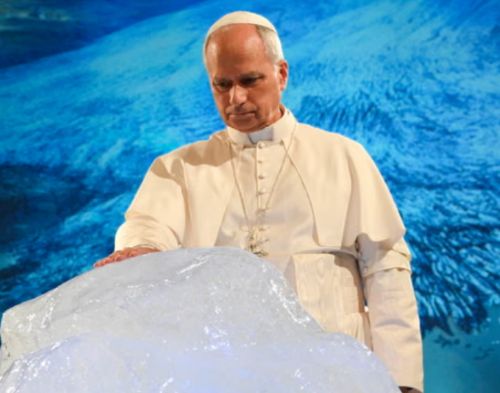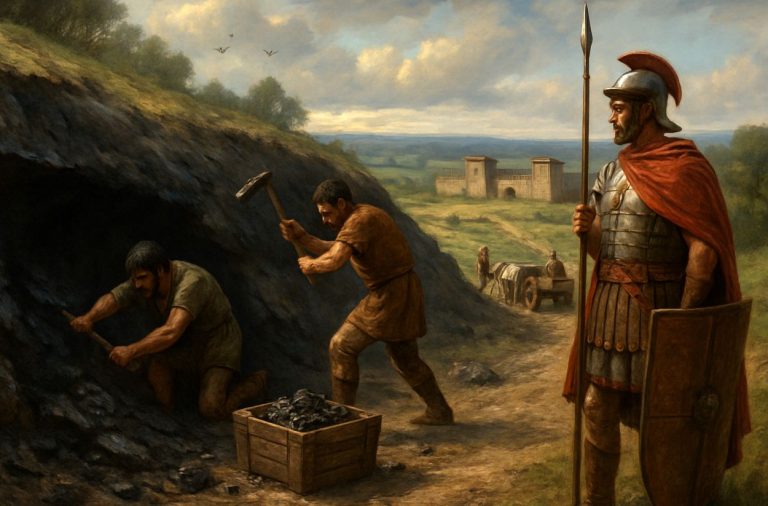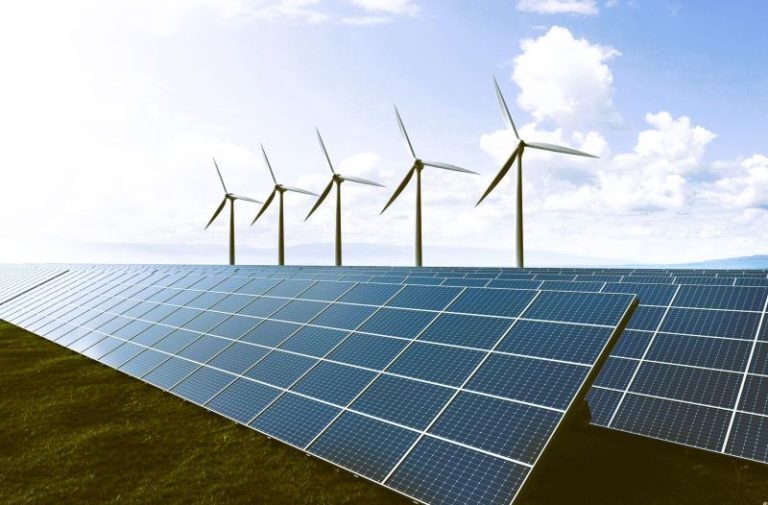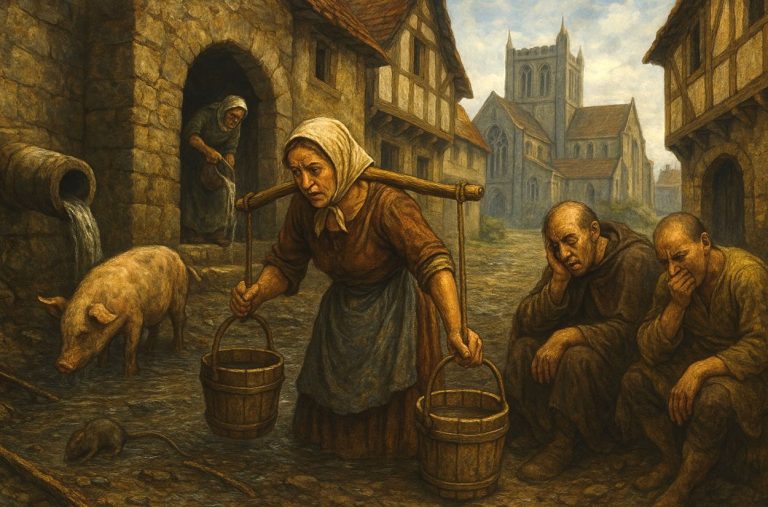

In the end, the image of Pope Leo blessing a block of melting ice may outlast the mockery it drew. It captures the essence of his challenge: to make visible what is invisible.

By Matthew A. McIntosh
Public Historian
Brewminate
Introduction
The marble halls of the Vatican have echoed with papal warnings before, but Pope Leo’s recent declaration on climate change landed like a thunderclap in a polarized world. Standing firmly in the line of his predecessor, the late Pope Francis, Leo affirmed that the climate crisis is not merely a technical problem for scientists and politicians but a moral test for humanity itself. “The earth is crying out,” he declared, urging governments and citizens alike to treat ecological care as a sacred duty. His words placed him directly in continuity with Francis’s Laudato si’ and its plea for “ecological conversion,” and in sharp contrast with voices dismissing global warming as political theater.
That sharp contrast was not lost on Donald Trump or his MAGA base. In the United States, where Catholic voters often find themselves at the crossroads of faith and ideology, Leo’s stance has drawn immediate fire. Conservative commentators branded him a “woke pope,” mocking his blessing of a melting ice block as a theatrical stunt. Trump himself, never one to let such moments pass quietly, nodded along with supporters who view climate change as an exaggerated hoax. What Leo framed as a moral summons to safeguard creation, MAGA leaders derided as capitulation to leftist dogma.
This confrontation is more than another headline in the culture wars. It lays bare a deeper struggle over the role of the papacy in modern politics, the unity of American Catholicism, and the global fight to confront ecological collapse. At stake is not only the credibility of Pope Leo’s young pontificate but also the Church’s ability to wield moral authority in a fractured, climate-stressed world.
Historical and Theological Context
Francis’s Ecological Legacy Revisited
To understand where Pope Leo stands, one must first revisit the revolutionary turn Pope Francis gave to Catholic social teaching on the environment. His 2015 encyclical Laudato si’ remains the watershed document, linking the ecological crisis to questions of justice, poverty, consumerism, and the spiritual conversion of humanity. It insists that climate change is not a peripheral scientific issue but an indictment of a throwaway culture, urging humanity to recover a sense of “integral ecology” in which human dignity, social bonds, and care for nature are inseparable.
Francis further developed this theme in Laudate Deum (2023), where he invoked a sharper urgency, chastising climate denial, calling for swifter action, and warning against reducing ecological engagement to weak gestures. Laudate Deum explicitly lambasted those who “ridicule those who speak of global warming.” That document has now become a baseline expectation for anyone claiming continuity with Francis’s ecological agenda.
Over his pontificate, Francis cultivated institutions (networks of universities for the care of creation), endorsed the Laudato Si’ Movement (a global Catholic climate-justice network), and gave moral legitimacy to divestment campaigns, Catholic climate summits, and ecological education.
The result: in many parts of the Church, the ecological octave he struck became a moral rubric for how Catholics understand global problems. But it also awakened resistance, from those who saw the pope straying into political activism, or who objected to its economic implications.
The Question on Leo’s Table: Break or Continuity?
When Cardinal Leo was elected in 2025, observers in theological, political, and ecclesial circles asked: would he roll back the ecological emphasis, as he might roll back other Francisian experiments, or carry it forward? The early months of his pontificate offered some hints; his inaugural Mass included denunciations of exploitation of Earth, marginalization of the poor, and a call for unity in caring for creation.
Yet the honeymoon was fragile. Many conservative Catholics initially viewed Leo as more moderate, possibly less “activist.” But the moment he publicly invoked climate urgency, he began to tread the same fault lines Francis had walked, now with a far more politically polarized global audience watching. In effect, Leo inherited not only Francis’s ecological agenda but also its battlelines.
From Doctrine to Moral Authority
Leo’s engagement with climate is not simply symbolic. In his address at the “Raising Hope for Climate Justice” conference, he framed Laudato si’ not as an accessory to Church teaching but as a core message for the contemporary moment. He reminded his audience that the challenges Francis named (ecological destruction, inequality, disregard for the poor) are more pressing now than ever.
He also stressed that the heart, interior conversion and change of lifestyle, must precede policy. “We must shift from collecting data to caring,” he urged. In other words, the pope is positioning climate not as one item on a political agenda, but as a locus of moral identity for the faithful.
Still, Leo is more cautious in rhetoric than Francis was. His tone tends to avoid polemics, insisting the Church has no capacity to override science or governance but instead to call consciences, dialogue, and model virtue. And yet, his decisions to open a climate training center at Castel Gandolfo (Borgo Laudato Si) and to host the first Mass for the Care of Creation signal he intends to institutionalize the ecological turn.
Pope Leo’s Climate Messaging
Speeches and Symbolism
From the moment of his election, Pope Leo has signaled that climate will not retreat to the sidelines of papal teaching. In one of his earliest major addresses, delivered on the tenth anniversary of Pope Francis’s Laudato si’, Leo declared that humanity “must shift from collecting data to caring.” He called on governments to act decisively but insisted that citizens themselves bear responsibility for holding leaders accountable, framing ecological conversion as a civic as well as spiritual task.
Perhaps most strikingly, he embraced Francis’s legacy not only in words but also in ritual. At a high-profile Vatican ceremony, Leo blessed a block of melting Arctic ice, a vivid act of moral theater that made international headlines. For supporters, it dramatized the urgency of climate breakdown in a way charts and speeches cannot. For critics, especially in the United States, it became a symbol of what they derided as a “woke pope” catering to liberal politics.
Institutional Commitments
Unlike a politician who governs by decree, a pope governs by symbol, teaching, and institution. Leo has already set in motion concrete initiatives. This September, he announced the creation of “Borgo Laudato Si,” a Vatican-run ecological training center at Castel Gandolfo, the papal summer residence.
The center is designed to host young Catholics, scientists, and activists for immersion programs linking faith, science, and ecological stewardship. “It is not enough to speak of the environment,” Leo said; “we must learn to live it.” The project formalizes the ecological emphasis begun under Francis and ensures it will have a structural base in Vatican life.
He has also leaned into annual observances such as the World Day of Prayer for the Care of Creation, expanding them into liturgical and catechetical events that stress the integration of faith and ecology. The Vatican’s own carbon-neutrality plan, installing solar arrays and revising energy consumption, has continued under his direction.
Tone and Pastoral Style
Leo’s rhetoric differs in texture from Francis’s. Where Francis often spoke with passionate spontaneity, sometimes veering into pointed critiques of capitalism or climate denial, Leo tends to adopt a more measured, pastoral cadence. His speeches emphasize responsibility and conversion rather than confrontation. “The work of healing creation is not about ideology but fidelity to God’s gift,” he told a gathering of bishops earlier this fall.
This distinction matters. Francis’s critics often accused him of veering too close to progressive politics. Leo, while equally committed to ecological urgency, couches the message in the language of tradition, prayer, and discipleship. Yet the effect is the same: a pope declaring climate change one of the defining moral challenges of the age.
MAGA Pushback and Political Reaction
“Woke Pope” and the Culture War
If Pope Leo hoped his more measured tone would soften partisan resistance, the early signs suggest otherwise. In right-wing media ecosystems, his climate homilies and symbolic gestures quickly became fodder for ridicule. Conservative Catholic influencers and MAGA-aligned commentators dubbed him the “woke pope,” portraying his ecological emphasis as an infiltration of progressive politics into the heart of the Church. The viral image of Leo blessing a block of Arctic ice circulated on social media alongside captions mocking the ritual as a “hippie climate stunt.”
This rhetorical assault is not only about climate. For MAGA activists, the label “woke” serves as a universal code for illegitimate authority. By branding the pope in such terms, they effectively position him as an outsider meddling in American cultural battles, despite his global moral role.
Trump’s Alignment
Donald Trump has long dismissed climate change as a “con job,” and Leo’s statements provided a fresh opportunity to reassure his base that nothing has changed. At rallies, Trump leaned into the contrast, scoffing at “the pope’s obsession with ice and oceans,” aligning himself squarely with the climate-skeptical sentiments of his followers. His allies in conservative Catholic networks echoed the critique, suggesting Leo should “stick to saving souls” rather than weighing in on carbon emissions.
The symbolism is stark: a pope declaring climate stewardship a moral duty, and a former U.S. president dismissing it as a hoax. Between them stretches a chasm that reflects the broader fracture between international institutions seeking climate action and nationalist movements resisting global frameworks.
Divisions Within American Catholicism
Perhaps the most profound fallout is within the American Catholic Church itself. Bishops and theologians broadly supportive of Francis’s ecological teaching have applauded Leo’s continuity, calling it a vital witness. Others, particularly in conservative dioceses, have voiced unease. Some see Leo’s words as undermining the Church’s focus on abortion and family life, accusing him of diluting moral clarity with political activism.
Among the laity, the reactions map closely onto partisan lines. Surveys show U.S. Catholics are split: younger Catholics and those leaning Democratic often welcome the pope’s ecological teaching, while older, more conservative Catholics echo MAGA criticisms. The effect is a Church divided against itself, caught between the universality of papal teaching and the intensity of America’s polarized politics.
A Political Cost for the Vatican?
For Leo, the backlash is both predictable and dangerous. Alienating a large bloc of American Catholics risks diminishing papal authority in a country where the Church still commands immense social influence. Yet tempering his message risks betraying the urgency of the crisis. The dilemma is stark: can a pope champion ecological justice without being dragged into partisan trench warfare?
Reading the Tensions and Underlying Dynamics
Theology vs. Politics
At the heart of this dispute lies a fundamental question: what is the scope of papal authority in the modern world? Pope Leo insists that climate change is not merely a scientific puzzle but a moral crisis, a matter of justice for the poor, stewardship of creation, and fidelity to God’s gift. In this framing, the papacy would be negligent if it remained silent.
MAGA leaders, by contrast, interpret such interventions as trespassing into political territory. For them, the papacy should remain confined to spiritual salvation, not ecological economics. The clash reveals a widening gap between Catholic social teaching, which has always addressed political and economic realities, and a nationalist populism that resists any moral authority beyond its own borders.
Identity and Polarization
The intensity of the backlash is not explained by climate alone. In the U.S. context, the word “pope” itself is freighted with symbolic weight, a transnational authority speaking across borders, unbound by American political tribalism. For MAGA Catholics, already navigating their dual identity as faithful parishioners and partisan warriors, Leo’s teaching forces a choice: allegiance to Rome’s moral authority, or loyalty to the populist movement that defines their politics.
This identity conflict mirrors larger cultural battles. Just as Francis once enraged critics by denouncing “the idolatry of money,” Leo’s ecological language threatens narratives of unfettered growth and resource exploitation that underpin Trump-era populism. What the Vatican frames as timeless teaching, critics recast as ideological intrusion.
Strategy and Audience
Observers note that Leo’s climate messaging seems less aimed at converting the hardened skeptics of MAGA and more at rallying the global Catholic mainstream. His creation of the Borgo Laudato Si ecological training center signals a strategy of institution-building: embedding ecological consciousness into the life of the Church, so it endures beyond partisan cycles. The strategy resembles Francis’s, planting seeds that may grow slowly, even in rocky political soil.
Yet the United States remains too influential to ignore. Catholic voters are pivotal in swing states; American bishops wield disproportionate media visibility; American money sustains countless Vatican projects. By choosing continuity on climate, Leo accepts the cost of resistance in exchange for the hope of long-term credibility.
Risks and Trade-offs
The stakes are high. If the MAGA movement succeeds in casting Leo as an illegitimate “woke pope,” papal authority could be weakened in one of the largest and wealthiest Catholic communities in the world. If Leo softens his ecological stance, however, he risks betraying both his predecessor’s legacy and the urgency of the crisis itself. In short, the Vatican now walks a narrow path: too bold, and it alienates a vital constituency; too cautious, and it loses moral relevance in a generation-defining challenge.
Case Studies and Illustrations
The Ice Blessing
One of the most memorable moments of Pope Leo’s early pontificate came when he blessed a block of melting Arctic ice at a Vatican ceremony. The gesture was theatrical, designed to give material weight to what can often feel like abstract discussions of carbon metrics and global targets. For many Catholics, it was a stirring sign that the pope understood the existential drama of climate collapse. For MAGA voices, however, the image was instantly weaponized. Conservative commentators blasted it as “hippie theater” and “climate idolatry,” turning what Leo saw as a moral ritual into a meme of ridicule.
Castel Gandolfo and Borgo Laudato Si
Just weeks later, Leo inaugurated the Vatican’s most ambitious ecological project yet: the Borgo Laudato Si ecological training center at Castel Gandolfo. The site, once a papal summer palace, is being transformed into a hub for climate education, activism, and research. The symbolism is powerful, a retreat once associated with papal leisure now devoted to ecological renewal. The project institutionalizes Leo’s climate teaching, ensuring it will be carried forward by generations of students, scientists, and activists regardless of political mood swings.
Trump’s Rhetorical Counterpoint
At nearly the same time, Donald Trump took the stage at one of his campaign rallies and dismissed Leo’s climate appeals outright. “We don’t need lectures about ice blocks,” he sneered, calling climate change a “scam designed to hurt American jobs.” His words drew thunderous applause, signaling how deeply entrenched climate skepticism remains among his supporters. The juxtaposition could not have been clearer: a pope invoking sacred duty to protect creation, and a former U.S. president mocking the crisis as a hoax.
The American Pew Divide
The fallout from these moments has rippled across parishes in the United States. In some dioceses, pastors held homilies tying Leo’s words to biblical calls for stewardship, drawing enthusiastic responses from younger Catholics. In others, conservative commentators warned parishioners against being “led astray” by papal activism. Polling shows a stark generational split: younger Catholics tend to view Leo’s teaching as aligned with their values, while older MAGA-leaning Catholics increasingly frame it as liberal politics masquerading as theology.
Broader Implications
Global Climate Politics
Pope Leo’s decision to carry forward Francis’s ecological legacy ensures that the Vatican remains one of the few moral institutions speaking consistently on climate at a global level. His voice joins the chorus of the United Nations, scientific academies, and activist networks calling for urgent decarbonization. Yet the papacy adds a dimension no other institution can: a moral claim rooted not in national interest but in universal human dignity. For governments dragging their feet, Leo’s message raises the stakes; to resist action is not only imprudent policy but also moral failure.
The American Church and Culture Wars
In the United States, however, the clash exposes the fault lines of a Church already divided. Leo’s continuity with Francis strengthens progressive Catholics who see ecological teaching as central to Christian witness. At the same time, it deepens suspicion among conservative Catholics who feel the papacy has been captured by politics. The result is a Church pulled in two directions, global Catholicism affirming climate action as doctrine, American Catholicism fracturing under partisan pressure.
This division echoes earlier conflicts in U.S. Catholic life, from debates over civil rights to disagreements about Vatican II. What is different now is the intensity of America’s polarized political culture, where a papal statement can be instantly reframed as either prophetic or partisan.
Papal Authority in the 21st Century
Leo’s stance raises a larger question: what does papal authority look like in an era when global populism challenges transnational institutions? John Paul II’s papacy helped galvanize resistance to communism, but he faced regimes, not culture-war movements within his own flock. Leo’s challenge is trickier: he must persuade, not conquer; inspire, not command. His authority depends less on decrees and more on the credibility of moral witness.
The risk is clear. If his words are reduced to just another partisan talking point, papal authority itself could suffer. Yet if he can hold the line, reinforcing the message that caring for creation is neither left nor right but Catholic, Leo may reshape the papacy as a lodestar in a fragmented world.
The Future of Catholic Climate Witness
Finally, Leo’s climate emphasis signals that ecological teaching is no longer a passing priority but a defining feature of contemporary Catholicism. Whether through institutions like Borgo Laudato Si, liturgical observances, or papal encyclicals, the Vatican has tied its credibility to the fate of the planet. This may prove one of the most consequential developments of modern Church history: a faith tradition aligning itself with the survival of creation itself.
Conclusion
The clash between Pope Leo and the MAGA movement is not a passing quarrel but a mirror of our age. On one side stands a pontiff who, in the footsteps of Francis, insists that climate change is not just a technical challenge but a moral summons, a call to conversion, justice, and global solidarity. On the other side stands a populist movement that dismisses ecological urgency as theater, weaponizes “woke” as a cudgel, and clings to a narrative of nationalism unbound by global responsibility.
For Leo, the risk is that his voice will be drowned in the noise of partisanship. For Trump and his allies, the danger is that history will judge their denial as a betrayal of both science and faith. Between them lies a Catholic Church caught in the undertow of culture wars, its unity frayed but its global mission clear.
In the end, the image of Pope Leo blessing a block of melting ice may outlast the mockery it drew. It captures the essence of his challenge: to make visible what is invisible, to speak of moral urgency in a world distracted by spectacle. The world can scoff, but the ice will still melt. And the pope, like his predecessor, has chosen to stand where history is thawing, on the side of creation, calling humanity to wake before the waters rise.
Originally published by Brewminate, 10.09.2025, under the terms of a Creative Commons Attribution-NonCommercial-NoDerivatives 4.0 International license.


